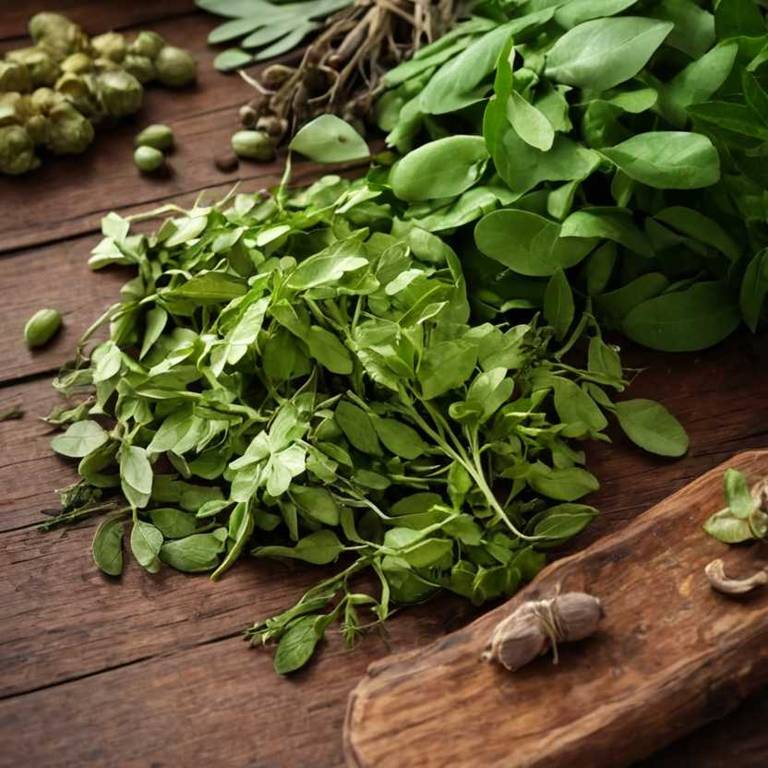By Leen Randell
Updated: Jul 06, 2024
What to know about Shorea robusta (sal) before using it medicinally

Shorea robusta, commonly known as sal, is a medicinal herb that has been used for centuries to improve cardiovascular health, reduce inflammation, and boost the immune system.
Cultivation of Shorea robusta requires a subtropical climate with well-drained soil and high humidity, making it a challenging plant to grow in temperate regions. From a botanical standpoint, Shorea robusta is a deciduous tree that belongs to the family Dipterocarpaceae, characterized by its broad leaves and fragrant flowers.
Historically, the herb has been mentioned in ancient Ayurvedic and Unani medical texts, where it was used to treat a range of ailments, including fever, cough, and digestive issues.
This article explains the medicinal, horticultural, botanical, and historical aspects of Shorea robusta.
What are the medicinal properties of Shorea robusta?
Shorea robusta helps with a range of health issues, including fever, rheumatism, and skin conditions. Its bark and leaves are used to make medicinal preparations. It is also used as a demulcent, soothing and protecting mucous membranes. The plant has anti-inflammatory and antibacterial properties.
The active constituents of Shorea robusta include flavonoids, phenolic acids, and terpenoids, which contribute to its medicinal properties. These compounds have been shown to exhibit antioxidant, anti-inflammatory, and antimicrobial activities, making them useful for various health applications.
The bark and leaves of the plant are most commonly used for medicinal purposes. The bark is used to make decoctions and infusions, while the leaves are used to make ointments and salves. The plant's parts are rich in active constituents, making them effective in treating various health conditions.
Improper use of Shorea robusta can lead to side effects such as allergic reactions, digestive issues, and interactions with other medications. Excessive consumption of the plant's extracts can also cause liver and kidney damage. It is essential to use the plant under the guidance of a healthcare professional.
Precautions when using Shorea robusta medicinally include consulting a healthcare professional before use, especially for individuals with underlying health conditions. Pregnant and breastfeeding women should avoid using the plant's extracts. Also, individuals with allergies should perform a patch test before using the plant's products.
What are the horticulural aspects of Shorea robusta?
Shorea robusta grow best in well-drained soils with full sun to partial shade. It prefers a temperature range of 15-40°C and annual rainfall of 800-2000 mm. Soil pH between 5.5 and 7.0 is ideal for its growth.
For successful planting, select a site with minimal competition from other vegetation. Dig a hole 2-3 times the size of the root ball, and plant the sapling at the same depth as it was in the nursery. Water thoroughly and maintain regular watering until establishment. Mulch around the base to retain moisture.
Harvesting can be done when the trees are 10-15 years old, and the diameter at breast height (DBH) is around 30-40 cm. Timber is harvested from the lower portion of the trunk, leaving a minimum of 6-8 feet of stem intact. Harvesting should be done in a way that minimizes damage to the surrounding trees and the ecosystem.
Common pests affecting Shorea robusta include the red-headed borer (Agra pulcherrima) and the stem borer (Cydia spp.). Diseases such as leaf spot, canker, and root rot caused by fungi like Cylindrocladium, Phytospora, and Phytophthora are also prevalent. Regular monitoring and management practices are essential to prevent infestation and disease spread.
What are the botanical aspects of Shorea robusta?
Shorea robusta is a deciduous tree with a broad, rounded crown and a straight, cylindrical trunk that can grow up to 45 meters in height. The bark is smooth, grey, and often has longitudinal fissures.
The taxonomical classification of Shorea robusta is as follows: Kingdom: Plantae, Clade: Angiosperms, Clade: Eudicots, Order: Malvales, Family: Dipterocarpaceae, Genus: Shorea, Species: S. robusta. It is a member of the family Dipterocarpaceae.
There are several variants of Shorea robusta, including Shorea robusta var. robusta and Shorea robusta var. acuminata. The former is found in the Himalayas and the latter is found in Southeast Asia.
Shorea robusta is widely distributed in the Indian subcontinent, Southeast Asia, and parts of China. It is found in tropical and subtropical forests, often at elevations of 1,000 to 2,000 meters.
The life cycle of Shorea robusta involves a period of 6-12 months of vegetative growth, followed by a flowering period of 1-2 months and a fruiting period of 3-6 months. The seeds are dispersed through wind and animals.
What are the historical aspects of Shorea robusta?
Shorea robusta is a plant with a rich history of medicinal and spiritual use. In ancient India, its bark was used to treat fever, skin conditions, and as a digestive aid. In traditional Chinese medicine, it was used to reduce inflammation.
In Hindu mythology, Shorea robusta is associated with the god Indra, who used its wood to create his mighty bow. In Buddhist mythology, the plant is said to have been used by the Buddha himself to treat his followers. In Hindu mythology, the plant is also associated with the goddess Durga.
Shorea robusta has a range of symbolic meanings across cultures. In Hinduism, it represents strength, courage, and protection. In Buddhism, it represents wisdom and spiritual growth. In traditional Indian wedding ceremonies, the plant is used as a decorative motif.
Shorea robusta is mentioned in several historical texts, including the Ayurvedic medical texts Charaka Samhita and Sushruta Samhita. The plant is also mentioned in the ancient Indian text, the Rigveda, where it is described as a sacred tree.
Several historical artifacts featuring Shorea robusta can be found in Indian museums, including intricate carvings and woodblock prints from ancient temples. In some cases, the plant's wood is used to create elaborate decorative motifs, often depicting mythological scenes.